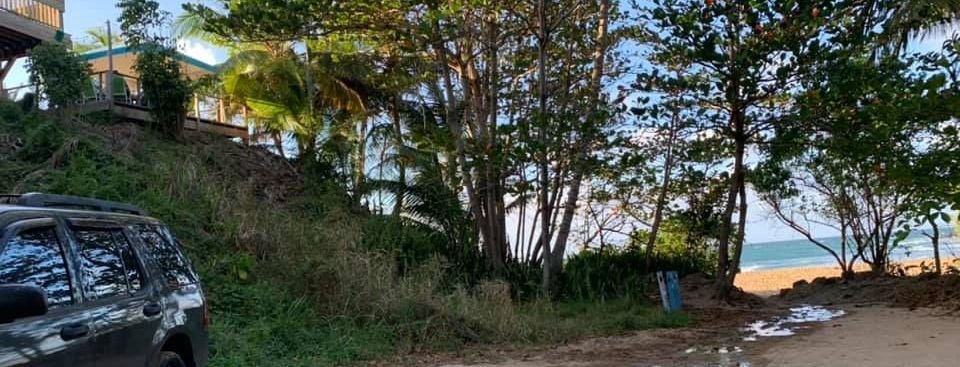
By Mara Dias and Steve Tamar
The incident begins, as they far too often do, with first the sight – and then smell- of a brown ribbon of foamy water beginning to crawl across the beach. You follow it upwards towards the vegetation line and discover the problem: a leaking septic tank half buried in the sand in the beach parking lot, just a few feet above sea level.
Unfortunately, a ‘perfect’ example of the globally ubiquitous threat from sewage to public and environmental health played out at the beach in Rincón during early March. The septic system of the picturesque municipally-owned Rincón Lighthouse complex, which contains the only public bathrooms at Domes Beach and a leased cooking facility with a small commercial kitchen, had overloaded and began overflowing into this very popular beach one sunny morning. This discovery is an almost perfect example of the three Ws -'what went right', 'what went wrong' and 'what can be done' to solve this issue. In Puerto Rico, 60% of private homes rely on individual septic systems, and waste from these systems can contaminate groundwater aquifers, surface waterways and beaches in the coastal zone.
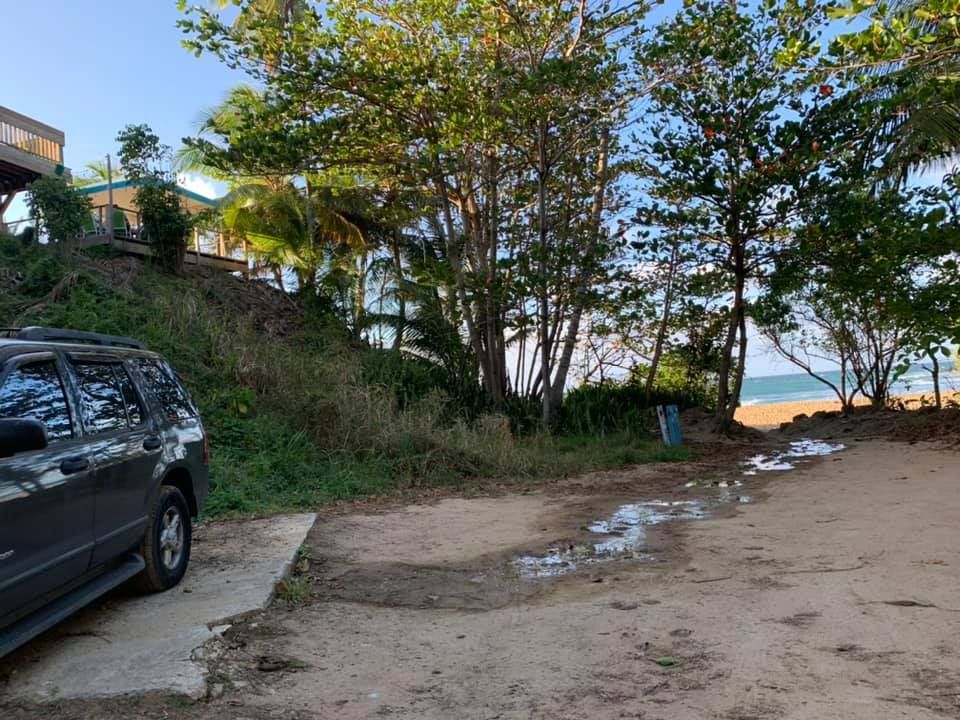
Above: A septic tank overflows onto a footpath leading to the beach, photo by Carolina N. Rios
What went right?
People noticed the septic leak right away of course. In fact the above photo was taken by a local high school student who has interacted with the chapter before. She knew that this was a serious problem that needed to be addressed immediately, and she took the photo and sent it to the chapter's Blue Water Task Force coordinator Steve Tamar. Thanks to the long-established Blue Water Task Force (BWTF) program in Rincón most surfers and other local residents have an informed level of concern and awareness about water quality issues. The Rincón Chapter has been testing water quality at the beach and in freshwater streams that discharge onto the beach along the NW coast of Puerto Rico on a weekly basis for over a decade. The chapter also widely disseminates their results after each sampling event, so a responsive network was already in place to identify the problem, report it to the affected businesses, and eventually the municipality (it was a Sunday). In as little as 24 hours after the discovery of this smelly problem at the beach, a truck was on-site to pump out the tank. The initial assumption was that the leakage was caused by large crowds using the bathrooms over the weekend.
While the chapter was pleased with the immediate response by the affected businesses and the local municipality that helped pay for the pump-out, they continued to keep an eye on the tank to see how quickly it filled back up, and they collected water samples from the ocean to try to determine how far the impact of this pollution could be felt. Fortunately the weather was favorable, and they didn’t have to worry about storm conditions exacerbating the problem in the short-term.
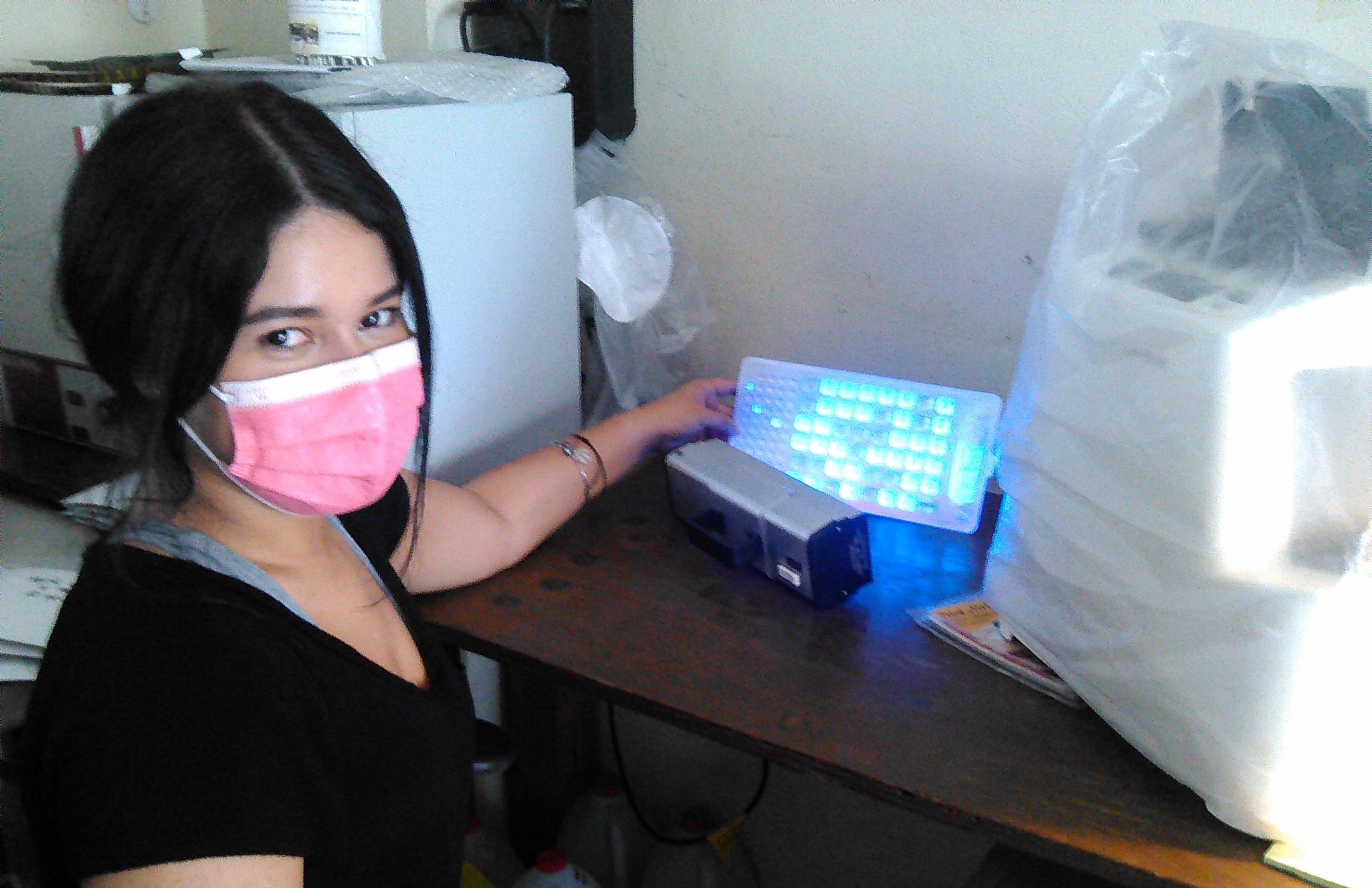
Above: A BWTF volunteer reads the results of a water test in the lab
What went wrong?
To begin with the tank was full of sand (likely from Hurricane Maria) and kitchen grease from a small cafe, or chinchorro. The poorly-maintained, 30-year-old tank is also in very bad physical shape with several cracks and holes visible at the surface. It is also a very basic single chamber tank that sits probably only 4 or 5 feet above sea level right next to the beach. Worse, the top of the tank has been somewhat covered by sand and cars have been parking right on top of it, likely contributing to the damage. Overall it is a very poorly designed system, installed in the wrong location, and over the years has not been maintained properly while being inundated with too heavy of a sewage load, storm surges, sand and even traffic! Poorly planned and improperly maintained wastewater infrastructure is not a problem only in Rincón, Puerto Rico but is increasingly problematic in both affluent and poor countries alike, and these situations will worsen, especially in the face of increasing storms and sea level rise associated with climate change, unless long term solutions are applied.
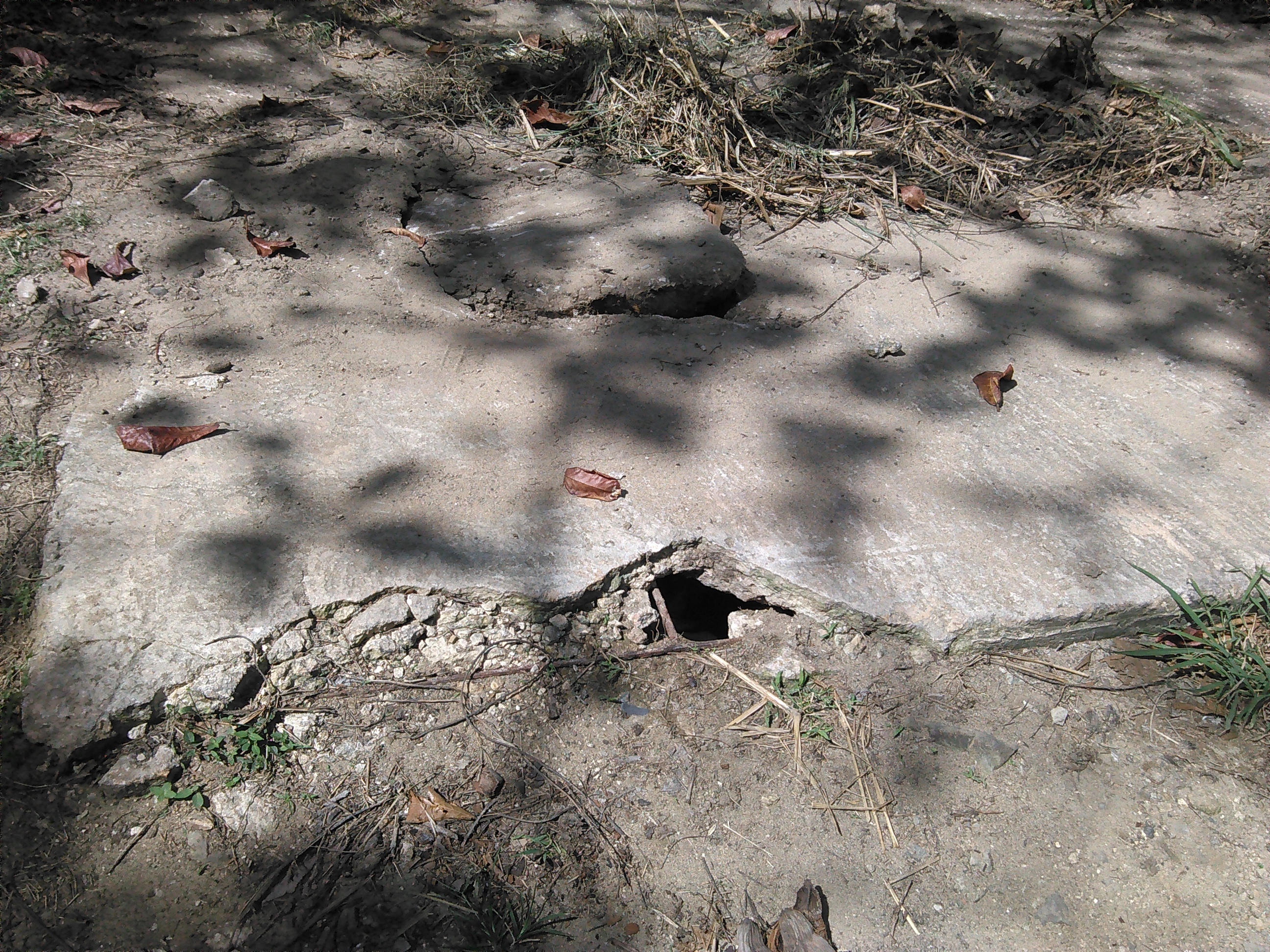
Above: A broken lid allows water and sand to enter the tank.
What is the solution?
In this case, it would be cheaper to construct a new proper septic system than try to maintain this failing tank. Ideally a 3-chambers system should be installed further uphill beyond the storm surge, with a leaching field that is more elevated and covered by grass or other vegetation. Because the municipally-owned Lighthouse complex frequently hosts large, multi-day festivals, with hundreds to even a couple thousand attendees, it is important that a new system be designed to accommodate the wastewater generated by these crowds, or other contingencies be made for these temporary increases in flow. A new public bathroom facility at the other end of the beach would also help to reduce stress on the existing facilities - even a couple Porta-Potties would help in the short term.
There is also a nearby sewage line that the Lighthouse complex could connect to but this is an even more expensive option and the local primary treatment sewage treatment plant is not always functioning properly in any case (another common issue in PR and elsewhere). The local municipality needs to consider all of these options to solve this problem, but overlapping jurisdiction and responsibility between the local municipality, the territorial government and federal agencies complicates the matter.
What now?
The chapter is continuing to monitor the situation. Reports have already come in that it looks like the tank is nearly full again only 2 weeks after it was pumped. The short term response was good, but the local municipality needs to develop a plan to accommodate the wastewater flow generated by this site, especially on busy beach weekends and certainly before any big festivals are held. The chapter has reached out to potential partner organizations such as Sea Grant to build community awareness of the growing problems caused by septic and sewage failures, especially in the face of climate change, and to press local authorities to implement real, long-term solutions.
Meanwhile, the Chapter has attracted the help of a University of Puerto Rico student, Astrid Zapata-de Jesus, to help them document the ongoing issues with this failing septic tank and to prepare a complaint to be filed with the regional EPA office. She had helped UPR document the chapter’s Post Maria Sampling Program efforts in the months following Hurricane Maria, but has recently been studying public health policy and microbiology. After hearing of this septic issue on the beach, she was motivated to once again connect with the Rincón BWTF team. The chapter of course was very happy to see her again, and is grateful for her additional assistance!
This incident shows just how valuable a community-based water quality program like the Blue Water Task Force is for raising awareness and driving solutions to fix these all too frequent failures of sewage infrastructure along our coasts. Check out all the sites that the Rincón BWTF is testing and view our data on Surfrider's website.
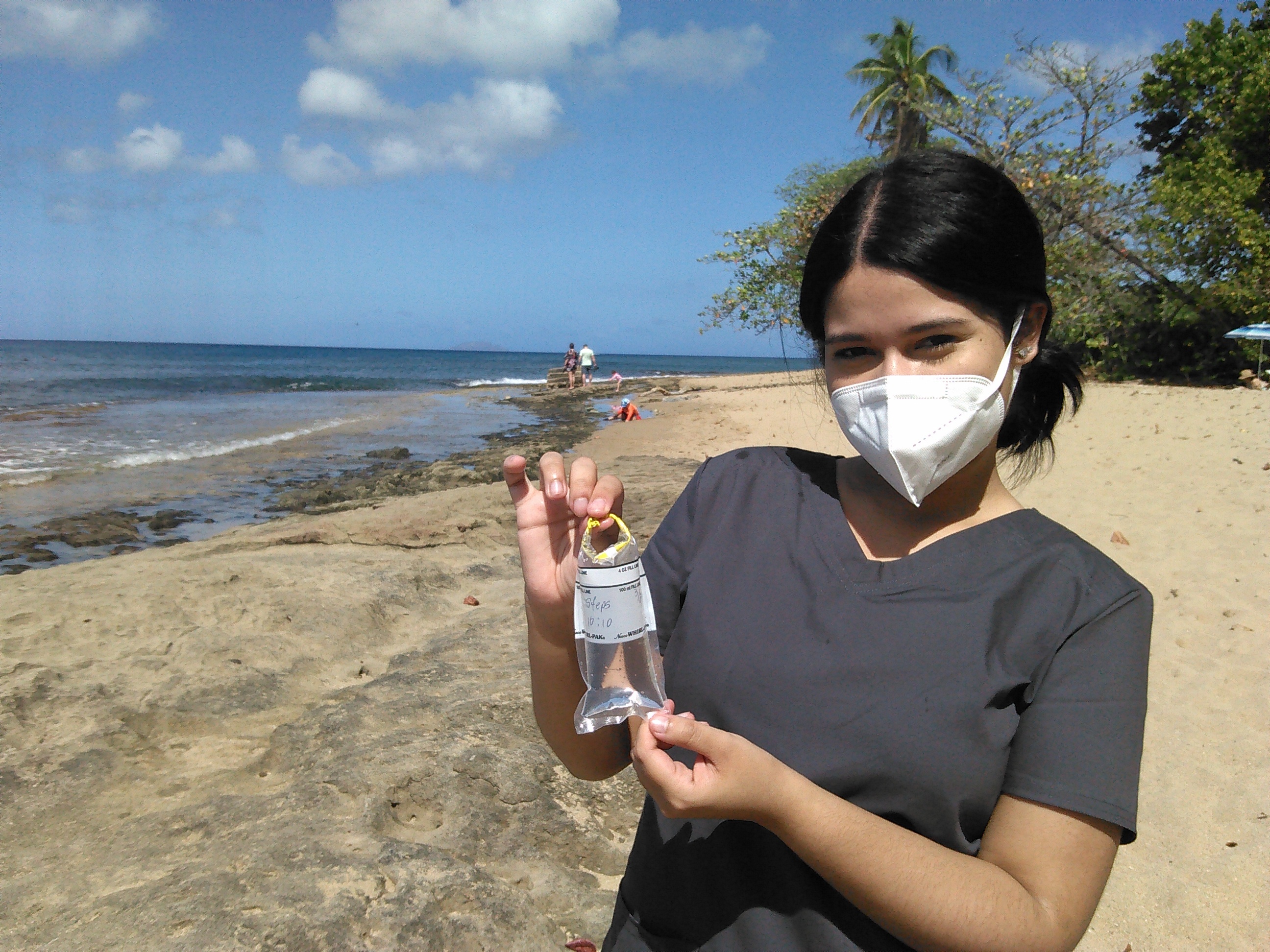
Hero image by Carolina N. Rios, all other photo credits Steve Tamar
